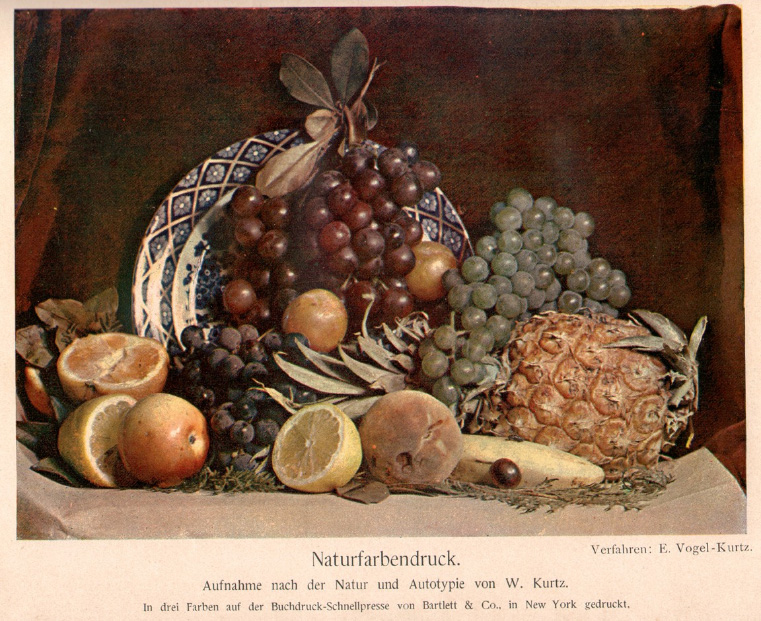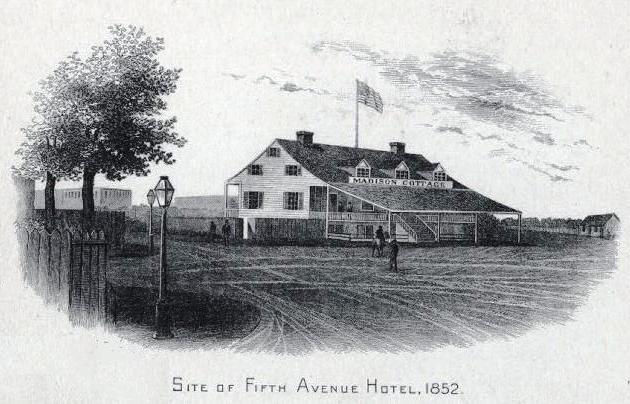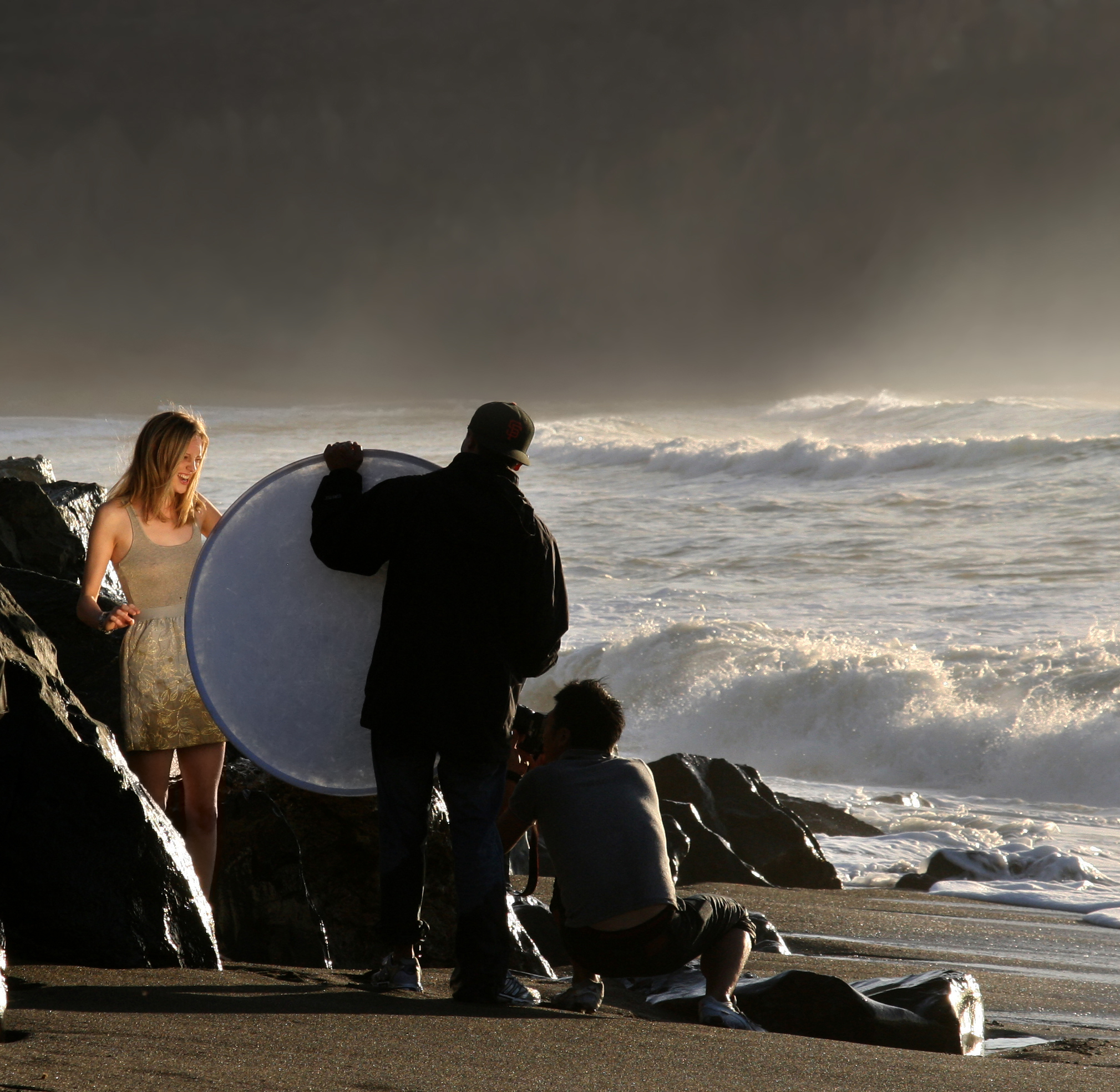|
William Kurtz (photographer)
William Kurtz (1833 – December 5, 1904) was a German-American artist, illustrator, and photographer. He was also a pioneer in the development of halftone printing of color photographs. Early life Born in Hesse, Germany, he was apprenticed to a lithographer in Offenbach am Main at a young age and showed considerable artistic talent, taking first place in exhibitions while attending an art school there. However, after his two years of compulsory military service, he found he had lost his apprenticeship and moved to England to try his luck. Unable to find work there, he joined the British German Legion and went to fight in the Crimean War. After the war, he was still unable to gain employment as a lithographer, so he became a sailor for several years. In 1859, he decided he would travel to China with a friend. En route to San Francisco, his ship wrecked off the Falkland Islands. The passengers and crew were rescued and he was taken to New York City. Here, he was able to fi ... [...More Info...] [...Related Items...] OR: [Wikipedia] [Google] [Baidu] |
Artist
An artist is a person engaged in an activity related to creating art, practicing the arts, or demonstrating an art. The common usage in both everyday speech and academic discourse refers to a practitioner in the visual arts only. However, the term is also often used in the entertainment business, especially in a business context, for musicians and other performers (although less often for actors). "Artiste" (French for artist) is a variant used in English in this context, but this use has become rare. Use of the term "artist" to describe writers is valid, but less common, and mostly restricted to contexts like used in criticism. Dictionary definitions The ''Oxford English Dictionary'' defines the older broad meanings of the term "artist": * A learned person or Master of Arts. * One who pursues a practical science, traditionally medicine, astrology, alchemy, chemistry. * A follower of a pursuit in which skill comes by study or practice. * A follower of a manual art, such a ... [...More Info...] [...Related Items...] OR: [Wikipedia] [Google] [Baidu] |
Madison Square
Madison Square is a public square formed by the intersection of Fifth Avenue and Broadway at 23rd Street in the New York City borough of Manhattan. The square was named for Founding Father James Madison, fourth President of the United States. The focus of the square is Madison Square Park, a public park, which is bounded on the east by Madison Avenue (which starts at the park's southeast corner at 23rd Street); on the south by 23rd Street; on the north by 26th Street; and on the west by Fifth Avenue and Broadway as they cross. The park and the square are at the northern (uptown) end of the Flatiron District neighborhood of Manhattan. The neighborhood to the north and west of the park is NoMad ("NOrth of MADison Square Park") and to the north and east is Rose Hill. Madison Square is probably best known around the world for providing the name of Madison Square Garden, a sports arena and its successor which were located just northeast of the park for 47 years, until 1925. The ... [...More Info...] [...Related Items...] OR: [Wikipedia] [Google] [Baidu] |
The New York Times
''The New York Times'' (''the Times'', ''NYT'', or the Gray Lady) is a daily newspaper based in New York City with a worldwide readership reported in 2020 to comprise a declining 840,000 paid print subscribers, and a growing 6 million paid digital subscribers. It also is a producer of popular podcasts such as '' The Daily''. Founded in 1851 by Henry Jarvis Raymond and George Jones, it was initially published by Raymond, Jones & Company. The ''Times'' has won 132 Pulitzer Prizes, the most of any newspaper, and has long been regarded as a national " newspaper of record". For print it is ranked 18th in the world by circulation and 3rd in the U.S. The paper is owned by the New York Times Company, which is publicly traded. It has been governed by the Sulzberger family since 1896, through a dual-class share structure after its shares became publicly traded. A. G. Sulzberger, the paper's publisher and the company's chairman, is the fifth generation of the family to head the pa ... [...More Info...] [...Related Items...] OR: [Wikipedia] [Google] [Baidu] |
Pneumonia
Pneumonia is an inflammatory condition of the lung primarily affecting the small air sacs known as alveoli. Symptoms typically include some combination of productive or dry cough, chest pain, fever, and difficulty breathing. The severity of the condition is variable. Pneumonia is usually caused by infection with viruses or bacteria, and less commonly by other microorganisms. Identifying the responsible pathogen can be difficult. Diagnosis is often based on symptoms and physical examination. Chest X-rays, blood tests, and culture of the sputum may help confirm the diagnosis. The disease may be classified by where it was acquired, such as community- or hospital-acquired or healthcare-associated pneumonia. Risk factors for pneumonia include cystic fibrosis, chronic obstructive pulmonary disease (COPD), sickle cell disease, asthma, diabetes, heart failure, a history of smoking, a poor ability to cough (such as following a stroke), and a weak immune system. Vaccines to ... [...More Info...] [...Related Items...] OR: [Wikipedia] [Google] [Baidu] |
Far Rockaway, Queens
Far Rockaway is a neighborhood on the eastern part of the Rockaway peninsula in the New York City borough of Queens. It is the easternmost section of the Rockaways. The neighborhood extends from Beach 32nd Street east to the Nassau County line. Its southern boundary is the Atlantic Ocean; it is one of the neighborhoods along Rockaway Beach. Far Rockaway is located in Queens Community District 14 and its ZIP Code is 11691. It is patrolled by the New York City Police Department's 101st Precinct. History The indigenous inhabitants of the Rockaways were the Canarsie Indians, a band of Mohegan, whose name was associated with the geography. By 1639, the Mohegan tribe sold most of the Rockaways to the Dutch West India Company. In 1664, the English defeated the Dutch colony and took over their lands in present-day New York.See New Amsterdam In 1685, the band chief, ''Tackapoucha'', and the English governor of the province agreed to sell the Rockaways to a Captain Palmer for 31 pou ... [...More Info...] [...Related Items...] OR: [Wikipedia] [Google] [Baidu] |
Electric Light
An electric light, lamp, or light bulb is an electrical component that produces light. It is the most common form of artificial lighting. Lamps usually have a base made of ceramic, metal, glass, or plastic, which secures the lamp in the socket of a light fixture, which is often called a "lamp" as well. The electrical connection to the socket may be made with a screw-thread base, two metal pins, two metal caps or a bayonet cap. The three main categories of electric lights are incandescent lamps, which produce light by a filament heated white-hot by electric current, gas-discharge lamps, which produce light by means of an electric arc through a gas, such as fluorescent lamps, and LED lamps, which produce light by a flow of electrons across a band gap in a semiconductor. Before electric lighting became common in the early 20th century, people used candles, gas lights, oil lamps, and fires. Vasily Vladimirovich Petrov developed the first persistent electric arc in 1802, an ... [...More Info...] [...Related Items...] OR: [Wikipedia] [Google] [Baidu] |
Reflector (photography)
In photography and cinematography, a reflector is an improvised or specialised reflective surface used to redirect light towards a given subject or scene. Types Apart from certain highly specialized components found in enlargers, projectors and scanners, photographic reflectors fall into two main groups: Lamp reflectors Similar to a domestic lampshade, these reflectors are fixed to an artificial light source (for example, a filament bulb or flash tube) to direct and shape the otherwise scattered light, reflecting it off their concave inner surfaces and directing it towards the scene to be photographed. Although there are a large number of variants, the most common types are: * spherical, short-sided, giving a relatively broad spread of light; * parabolic, providing a tighter, parallel beam of light. The ''reflector factor'' is the ratio of the illumination provided by a lamp fitted within a reflector to the illumination provided without any reflector fitted. A matte refl ... [...More Info...] [...Related Items...] OR: [Wikipedia] [Google] [Baidu] |
Portrait Photography
Portrait photography, or portraiture, is a type of photography aimed toward capturing the personality of a person or group of people by using effective Photographic lighting, lighting, Painted photography backdrops, backdrops, and poses. A portrait photograph may be artistic or clinical. Frequently, portraits are commissioned for special occasions, such as weddings, school events, or commercial purposes. Portraits can serve many purposes, ranging from usage on a personal web site to display in the lobby of a business. History The relatively low cost of the daguerreotype in the middle of the 19th century and the reduced sitting time for the subject, though still much longer than now, led to a general rise in the popularity of portrait photography over painted portraiture. The style of these early works reflected the technical challenges associated with long exposure times and the painterly aesthetic of the time. Hidden mother photography, in which portrait photographs featured y ... [...More Info...] [...Related Items...] OR: [Wikipedia] [Google] [Baidu] |
Vignetting
In photography and optics, vignetting is a reduction of an image's brightness or saturation toward the periphery compared to the image center. The word ''vignette'', from the same root as ''vine'', originally referred to a decorative border in a book. Later, the word came to be used for a photographic portrait that is clear at the center and fades off toward the edges. A similar effect is visible in photographs of projected images or videos off a projection screen, resulting in a so-called "hotspot" effect. Vignetting is often an unintended and undesired effect caused by camera settings or lens limitations. However, it is sometimes deliberately introduced for creative effect, such as to draw attention to the center of the frame. A photographer may deliberately choose a lens that is known to produce vignetting to obtain the effect, or it may be introduced with the use of special filters or post-processing procedures. When using superzoom lenses, vignetting may occur all alo ... [...More Info...] [...Related Items...] OR: [Wikipedia] [Google] [Baidu] |
Still Life
A still life (plural: still lifes) is a work of art depicting mostly wikt:inanimate, inanimate subject matter, typically commonplace objects which are either natural (food, flowers, dead animals, plants, rocks, shells, etc.) or artificiality, man-made (drinking glasses, books, vases, jewelry, coins, pipes, etc.). With origins in the Middle Ages and Ancient Greco-Roman art, still-life painting emerged as a distinct genre and professional specialization in Western painting by the late 16th century, and has remained significant since then. One advantage of the still-life artform is that it allows an artist much freedom to experiment with the arrangement of elements within a composition of a painting. Still life, as a particular genre, began with Netherlandish art, Netherlandish painting of the 16th and 17th centuries, and the English term ''still life'' derives from the Dutch word ''stilleven''. Early still-life paintings, particularly before 1700, often contained religious and al ... [...More Info...] [...Related Items...] OR: [Wikipedia] [Google] [Baidu] |
Color Printing
Color printing or colour printing is the reproduction of an image or text in color (as opposed to simpler black and white or monochrome printing). Any natural scene or color photograph can be optically and physiologically dissected into three primary colors, red, green and blue, roughly equal amounts of which give rise to the perception of white, and different proportions of which give rise to the visual sensations of all other colors. The additive combination of any two primary colors in roughly equal proportion gives rise to the perception of a secondary color. For example, red and green yields yellow, red and blue yields magenta (a purple hue), and green and blue yield cyan (a turquoise hue). Only yellow is counter-intuitive. Yellow, cyan and magenta are merely the "basic" secondary colors: unequal mixtures of the primaries give rise to perception of many other colors all of which may be co Modern techniques While there are many techniques for reproducing images in color, ... [...More Info...] [...Related Items...] OR: [Wikipedia] [Google] [Baidu] |
CMYK Color Model
The CMYK color model (also known as process color, or four color) is a subtractive color model, based on the CMY color model, used in color printing, and is also used to describe the printing process itself. The abbreviation ''CMYK'' refers to the four ink plates used: cyan, magenta, yellow, and key (black). The CMYK model works by partially or entirely masking colors on a lighter, usually white, background. The ink reduces the light that would otherwise be reflected. Such a model is called ''subtractive'' because inks "subtract" the colors red, green and blue from white light. White light minus red leaves cyan, white light minus green leaves magenta, and white light minus blue leaves yellow. In additive color models, such as RGB, white is the "additive" combination of all primary colored lights, black is the absence of light. In the CMYK model, it is the opposite: white is the natural color of the paper or other background, black results from a full combination of colo ... [...More Info...] [...Related Items...] OR: [Wikipedia] [Google] [Baidu] |


.png)





_-_Bouquet_of_Flowers_in_a_Ceramic_Vase.jpg)
